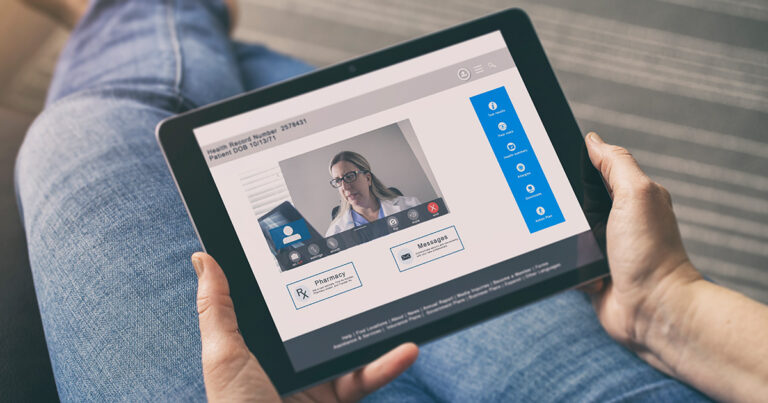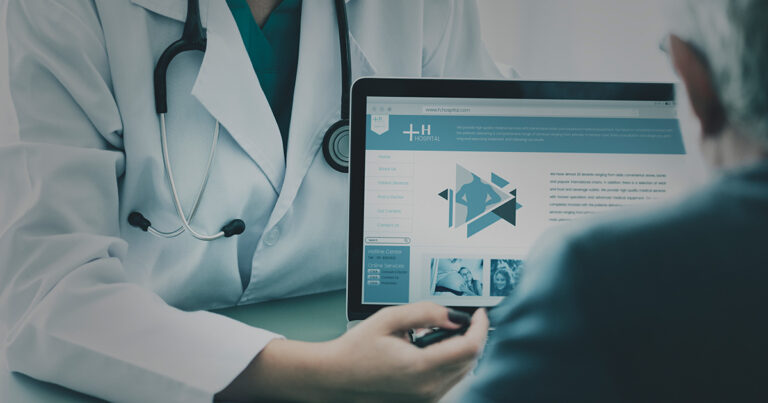How to Modernize for a Truly Patient-Centered Practice
Technology and healthcare have one very important thing in common: They’re both designed to improve people’s lives.
It makes sense that healthcare practices would use technology to provide better services, ease anxieties, improve productivity and otherwise enhance the healthcare experience.
But not every practice has (or can) adopt the newest and latest technologies available to them. Some might be too expensive, or hard to come by.
Some healthcare-related technology may simply be difficult to integrate to older systems, or practitioners and staff may not always be trained to use it properly (and training can add to costs).
But that doesn’t mean healthcare practices should avoid newer technology.
There are plenty of ways to modernize your practice with current technology in order to help the patient experience, without it costing an arm and a leg.
Here are a few ways to use healthcare technology to create a truly patient-centered practice:

Fully Embrace Electronic Healthcare Records
The American Recovery and Reinvestment Act, which was passed in 2014, required all public and private healthcare providers to adopt “meaningful use” of electronic healthcare records (EHR).
The act included financial incentives for healthcare providers, but also enacted penalties for those who were non-compliant (a 1% reduction in Medicare reimbursements).
But considering the average cost for implementing an EMR system for a single physician is around $163,765, it’s understandable why so many practices were hesitant to make the switch.
As of March 2017, only 67% of practices reported using EHRs. Though that figure is up from the previous year, it’s still far short of a complete adoption of the technology as mandated in 2014.
While it does take some time to update systems to embrace EHR, it’s important that practices take advantage of this technology as soon as possible.
Not only do EHR systems reduce medical errors (which cost around $19.5 billion each year), but they offer better protection for patients who visit multiple doctors or who require access to their medical records on a frequent basis.
When patients have access to their records, it’s easier for them them to participate in their own care.
Use Mobile Technology and Apps
There are other, less expensive technologies that can modernize your practice, however.
In 2009, the HITECH Act started the process of digitizing health data, but studies show that many patients still receive their health data on a USB stick or CD-ROM. But certain tech companies like Apple are seeking to change that.
They are rumored to be developing iPads for the specific purpose of healthcare.
iPads and even iPhones have been used by some hospitals for more than five years now, and Apple wants to make it even easier for practitioners to use their technology to assist in patient care.
Even if you didn’t have the ability to buy iPads for every single patient, having a portable tablet for intake forms, for example, can help streamline the process.
Cedars Sinai uses iPad apps to record vitals and other information on roughly 50 iPads in its heart failure unit.
Many hospitals also use FaceTime and Skype on mobile tablets and phones to connect patients to loved ones or to consult with other practitioners on tough cases.
In fact, in one Software Advice survey of U.S. patients, 75% indicated they were at least “moderately interested” in replacing an in-person office visit with a virtual consultation.
Another study showed that the majority of patients surveyed were at least moderately (37%) or “very interested” (24%) in telecommunication as a part of their healthcare services.

Apps, phones and mobile tablets are a great way to offer this level of telecommunication, as well as an overall extra level of service to patients without spending a lot of money on other expensive telecommunication systems.
Enhance Your Practice’s Online Presence
Other ways to modernize the patient experience include adding certain elements to your website that give patients more control over your care.
Having an online portal for patient check-in, for example, where they can access information about their upcoming procedures or pay medical bills, can come in handy for patients who can’t make it into the clinic on a regular basis.
Using online intake forms is another way to streamline the check-in process, allowing visitors to fill out forms before they come in, reducing their wait time in the office.
Website design can also improve the patient experience. Using large, colorful buttons can help those with vision impairment navigate your site.

Including audio translations of important information can assist those with vision impairment. Alternatively, including written transcripts of any videos playing on your site can help those with hearing loss.
Making your website as patient-friendly as possible – easy to navigate, read, hear/see, and understand important concepts – can go a long way to improve the overall patient experience.
Use Healthcare Analytics Solutions
According to one 2016 Gartner report, the three most important IT capabilities for healthcare are digitalization, analytics and on-demand communication.

The use of clinical reporting tools and analytics solutions, in particular, is a great way to modernize a practice to keep up with patient needs.
Clinical reporting tools make it possible to incorporate advanced analytics into your practice’s workflow.
These analytic tools can turn complex or otherwise confusing clinical data into easy-to-read charts, graphs or reports that can be used to relay information in a much clearer way.
This not only gives practitioners and staff insight into a patient’s health, for example, but allows patients to better understand their own medical needs.
This data can also be used alongside EHRs to provide easy access to medical information, in order to track a patient’s well being over time.
This enables practitioners and patients alike to make better healthcare decisions, monitor their conditions, and engage with health in a way that traditional paper forms or other tools simply can’t.
To quote Barbara Swan, the Chief Medical Information Officer for Marathon Health, “[Analytic tools] such as these can allow clinicians to provide proactive medical care versus reactive.
Check out these 7 mobile apps that will create a patient-centered experience, and modernize your practice.
Final Thoughts
There are various ways to create a patient-centric practice with modern technology, from the “big” tech solutions like EHR systems to the use of mobile apps or analytics software.
Even if you run a single patient practice or a small clinic, you can still use technology to enhance the patient experience.
If you’re not sure where to start, consider starting small, with the use of online forms and other services (like a patient portal).
If possible, ensure that your medical and healthcare records are digitized, or in process of being fully digitized. And consider adopting other technologies, like apps or mobile tablets, wherever possible.
By using technology to streamline processes, you ensure that patients have access to the information they need, when they need it, in a way that’s convenient to their lifestyles.







